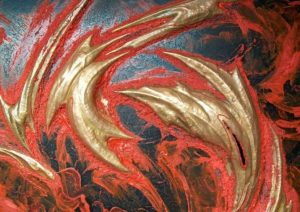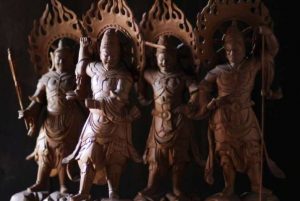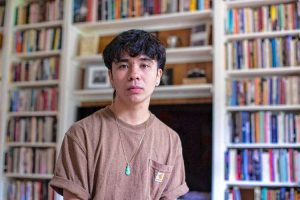The Zhiguan Museum of Fine Art in Beijing houses one of the most important collections of Himalayan art in the world, encompassing thangka textiles and paintings, as well as sculptures from Gandhara, northern India, Pakistan’s Swat District, Kashmir, Nepal, Tibet, and Han regions of China. Dedicated to the preservation, promotion, and research of Himalayan art, the museum strives to strengthen the community of museums, private collections, and educational institutions, both in China and internationally.
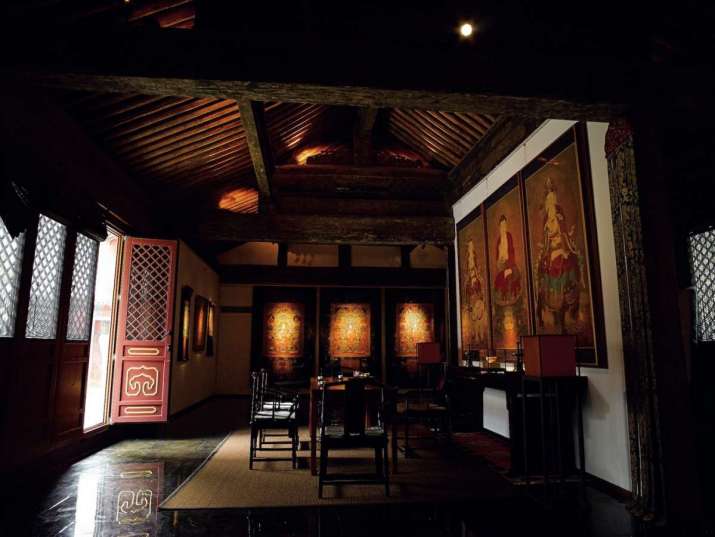
Image courtesy of the Zhiguan Museum of Fine Art
With this lofty mission, the Zhiguan Museum embarked on its first major exhibition “The Light of Buddha” in October 2018, in collaboration with the Palace Museum in Beijing. The first comprehensive exhibition on Himalayan art in China, it assembled 112 exquisite sculptures from the former imperial collection at the Palace Museum, the Zhiguan Museum of Fine Art, and other private collections in China. Dating from between the fourth and 15th centuries, these sculptures illuminate the development of Tibetan art in the larger context of Himalayan art.

exhibition, Palace of Abstinence, Palace Museum.
Image courtesy of the Zhiguan Museum of Fine Art
Unlike Tibetan art, “Himalayan art” is a very new term to the general public in China. Luo Wenhua, curator of the exhibition and director of the Research Center for Tibetan Buddhist Heritage at the Palace Museum, elucidated that, as a discipline, Himalayan art did not emerge in Chinese academia until the late 1980s and early 1990s; over the decades, the scope of research has grown beyond sites in Ngari in western Tibet (such as Tholing Monastery, the Guge kingdom ruins, and cave temples) and Sino-Tibetan art around Dunhuang, the Hexi Corridor, and Beijing, and expanded to cover Tibet, Qinghai, western Sichuan, and Gansu. However, Luo pointed out that the scope is still limited and he envisions that more breakthroughs will be achieved by broadening the horizon to look at regions such as northern Pakistan, Nepal, Ladakh, Himachal Pradesh, and even other parts of India and northern Myanmar.
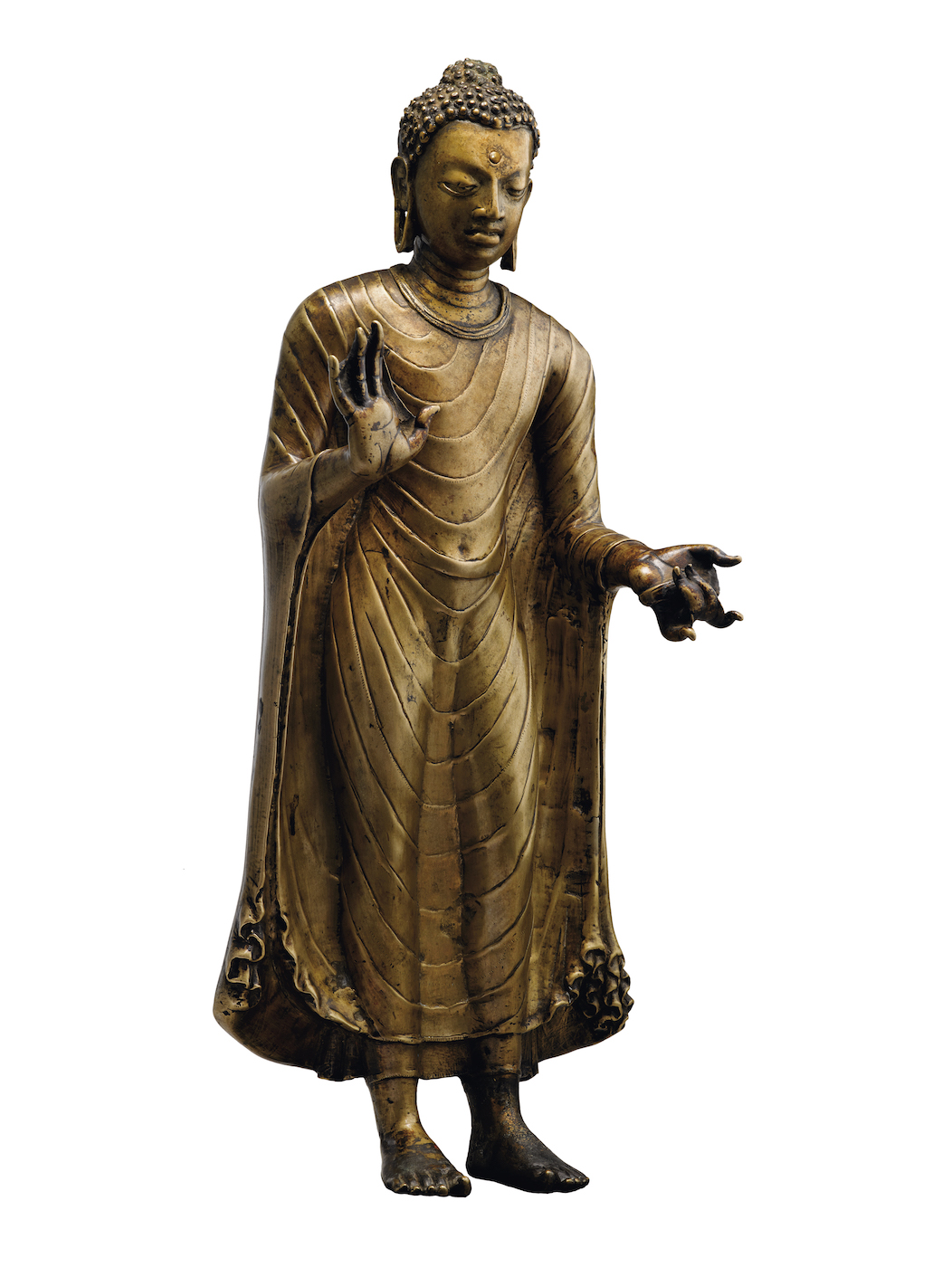
Image courtesy of the Zhiguan Museum of Fine Art
Therefore, “The Light of Buddha” set out to trace the two routes of transmission and transformation of Tibetan art: one from northwestern India to western Tibet, and the other from northeastern India and Nepal to central Tibet. Never before has there been an exhibition in China that fully represents Himalayan art in terms of its origin and development, aesthetics, and style, and it caused great excitement at home and abroad. World-renowned experts of Himalayan art gathered in Beijing, joined by scholars, collectors, artists, and amateurs from across China.
For a relatively small field, such enthusiasm was surprising and encouraging. In recent years, a growing number of young scholars with solid academic backgrounds and fieldwork experience have become interested in Himalayan art. Cheng Ping-yang, researcher at the Zhiguan Museum of Fine Art, turned to this field after a bachelor’s degree in law. “Himalayan art comes from perhaps the most hazardous and harsh terrain on the planet; however, it expresses the local people’s homage to the infinite cosmos and their yearning for a perfect and blissful realm,” he explains. “Such emotions are universal, and I think that is why Himalayan art can touch the hearts of people from diverse cultures.”

Image courtesy of the Zhiguan Museum of Fine Art
In the exhibition “The Light of Buddha,” the Zhiguan Museum unveiled many of its masterpieces: an extremely rare Gandharan bronze sculpture, dated to the 4th–5th century, represents a standing Shakyamuni Buddha posed in the abhaya mudra (gesture of fearlessness). Another Buddha image in copper alloy demonstrates the same posture but in the different style of the late Gupta period (fourth century to the mid-sixth century). It was later lent to the “Cultural Exchange Along the Silk Road: Masterpieces of the Tubo Period (7th–9th century)” in Dunhuang, displayed in juxtaposition with a similar piece from the Pritzker Collection. Other awe-inspiring statues include a 10th or 11th century seated Buddha, whose sophisticated craftsmanship marks it as one of the most important works from the Kathmandu Valley. There is also a sumptuously gilded and adorned Manjushri image, almost one meter in height, standing with great majesty and elegance.

Image courtesy of the Zhiguan Museum of Fine Art
As the state’s most important cultural venue, the Palace Museum rarely partners with private museums. Luo Wenhua commented: “As the exhibition shows, the Zhiguan collection, particularly those early Himalayan pieces, complements that of the Palace Museum. Moreover, the Zhiguan is very serious and scholarly in its approach.” Indeed, according to Jeff Watt, director of the Zhiguan Museum of Fine Art, when preparing the first publication named after the museum, the Zhiguan actively “reached out to many different individuals, academics, museum professionals, independent scholars, and students in the field to solicit comments and different points of view on both the objects and on the future role of the Zhiguan Museum of Fine Art.”
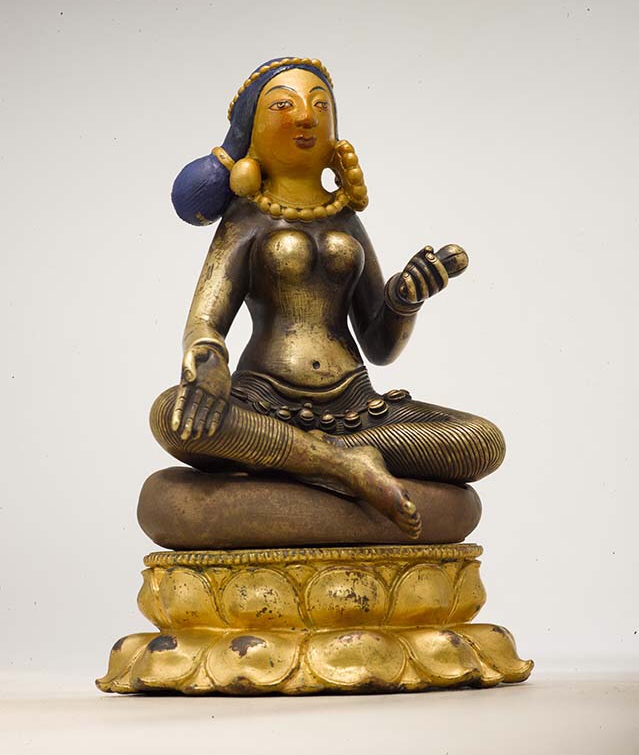
Image courtesy of the Zhiguan Museum of Fine Art
For these very reasons, the Rubin Museum of Art opened a special exhibition “Treasures from the Zhiguan Museum” on 9 March 2019 (coinciding with Asia Week in New York), which will run through 23 March 2020. According to Karl Debreczeny, curator of the exhibition, “This focused selection of seven objects was chosen to reflect the depth of quality and breadth of the Zhiguan Museum’s collection, with exemplary highlights of northeastern Indian, Kashmiri, Tibetan, and Chinese artistry ranging from the 11th to the 18th centuries.” Altogether, they are intended to illustrate cultural exchange between artistic traditions, and at the same time to enchant. For instance, a small sculpture inscribed with “Made by the hand of the revered Choying Dorje” in Tibetan has intrigued experts in the field. Karl Debreczeny explained that it has been variously attributed a thousand years apart: that is either from the period of the Tibetan empire (7th–9th centuries) or by the hand of the 10th Karmapa Choying Dorje (1604–74).

Image courtesy of the Zhiguan Museum of Fine Art
In addition to its collection of Himalayan art, the Zhiguan Museum has other fascinating connections with Buddhism as well as cultural exchanges. Located at 12 Jinyu Hutong in Beijing, the Zhiguan premises used to be the eastern part of Xianliang Monastery, which itself was converted from the residence of Prince Yi (1686–1730) at his will, the 13th son of the Kangxi Emperor. The grand project of the Qianlong Tripiṭaka (Chinese Buddhist canon) was launched at Xianliang Monastery. In fact, many eminent figures stayed at the monastery, such as Zeng Guofan, Zhang Zhidong, Zuo Zongtang, Li Hongzhang, Yuan Shikai, Kang Youwei, and foreign envoys to the Qing court. Moreover, in modern Chinese, “Zhiguan” literally means “stop” and “observe,” and in Buddhist terminology, referring to “Śamatha-vipaśyanā” (Skt.), major principles of meditation.
Looking to the future, the Zhiguan Museum’s founder, Mr. Li, expressed that the museum is dedicated to hosting and organizing exhibitions and seminars to promote Himalayan art and academic exchange; moreover, it will continue to enrich the breadth and excellence of its collection.
See more
The Light of Buddha——Buddhist Sculptures of the Palace Museum and Zhiguan Museum of Fine Art (The Palace Museum)



